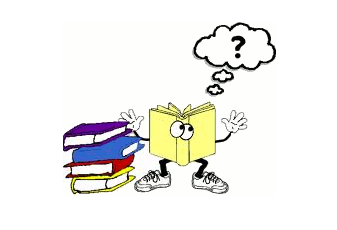Lesson 4: Appropriate Print

Learning Outcomes
Upon completion of this lesson's material, students will be able to:
- Identify standards for children’s literature.
- Choose developmentally appropriate literature using standards and writing annotations.
- Explain how environmental print is important in language, literacy and literature development.
- Explain the importance of screening other sources of language and literacy
Teaching
Selecting Children’s Books
Children should have experiences with books every day - including time for being read to and time for reading or looking at books by themselves. Literature not only aids in the development of language and literacy skills, but it also serves as a tool for helping children understand themselves and the world around them. The selection of high-quality children's books is a very important part of the literacy process and requires a variety of standards.
Books should reflect children’s culture which includes their lifestyle, family, and home/school community. When a child sees themselves accurately represented it helps to promote positive self-esteem and self-worth. For example, right here in Central Maine there has been an increase of children whose families are from Japan, China, Venezuela, South America and more. Imagine being born in another country and relocating to Central Maine only to hear a strange language, smell weird fragrances and see an entirely different environment. Books may or may not be of value to them in their culture but it is in ours, so no-doubt, in your childcare setting, they will see books. Now when they pick up a book they will find nothing in there that represents where they came from. They are looking at strange objects, strange foods, strange animals and letters that are completely unfamiliar. Most importantly, none of the people in the book look like them. Imagine how lost they feel. Nothing to them is familiar and their self-esteem is certainly not growing from the lack of representation.
Unfortunately, that example is all too familiar and the same feeling is true for other children who may come from a diverse family or have a disability. They could have a family with one parent, two of the same gender parents, a child who lives in a homeless shelter, or a family member with a disability. It would be nearly impossibly to find a book for each and every scenario. However, you CAN assure that the books you select have appropriate illustrations, story line, language, setting, and characters.
This will look different depending on the age group and from the following readings and examples. You will develop your own set of standards for selecting children’s books using the template provided.
Picture Book Annotations
Annotations are the “makeup” of literature and/or comments added to it. Annotating children’s literature can help to organize your book library and give purpose to using them. These annotations will also help you to align the most appropriate book with a lesson plan.
Other sources of Print and Language
Literacy and language is not only learned from books but from environmental print, rhythm and music. Hearing our mothers heartbeat, listening to the radio, childhood songs and recognizing environmental print are some examples of the earliest stages of literacy development and should not be overlooked. It is how they make sense of the world around them and it is everywhere. It’s in our vehicles when we listen to music or on labels at the store when we cart them around shopping. Children are exposed to more language and literacy than we think about and in our setting we are in charge of how we set up our environment for developmental success. In addition to literature, it is equally important to screen those sources as well. Do we want our children singing the annoying Barney song or repeatedly singing songs about big booties? However funny it may be, think about the impact on self-esteem, self-confidence and toxic media messages that impact the young impressionable brains that are being hardwired.
For the assignments, you will need to
Assessment
Lesson 4 Assignment - Book Standards
Choose an age group (0-3 or 3-5) and develop 10-15 standards for selecting children’s books using the resources provided. The standards must include guidance for:
- message
- illustrations
- setting
- characters
- language
Use the template to write your standards and explanation. Your explanations for each standard should be supported by the readings.
Lesson 4 Assignment - Book Annotations
Choose 10 books for your selected age group and provide an annotation for all using the template provided. If you do not have books at your disposal, you can visit a local library, the KVCC early childhood library or look online if need be. In fact, you may need to look online for other titles by the author and related titles.
Lesson 4 Discussion - Incorporating Language and Literacy
Aside from books, name three additional appropriate ways to incorporate language and literacy into the environment and explain how each is equally important. Explain how you could use your literature standard guide to also screen other sources of language and literacy.
